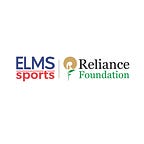Importance of Sports Medicine & Sports Science in Paralympic- sports
Manish Rana, has a masters in Musculoskeletal Sports Science and Health from Loughborough University (World rank 1 Sports University). He has a masters in sports physiotherapy and bachelors in physiotherapy. He has worked with Indian Para-athletes for more than 2 years in various roles (manager, physiotherapist, classifier). He discusses a model for the systematic development of sports injury-prevention strategies concerning Spinal Cord Injury.
The International Paralympic Committee (IPC) is the international governing body of sports for athletes with disabilities and acts as the International Federation for 10 sports with a vision “to enable Paralympic athletes to achieve sporting excellence and inspire and excite the world.” This envisions the road to sporting excellence through the development of all athletes from initiation to elite levels of performance. Over the last decade, Paralympic sport has witnessed enormous growth in terms of popularity and participation. With respect to the number of athletes participating, the Paralympics is currently second-largest sporting event in the world, just behind the Olympic Games. The excitement, drama, ecstasy, and despair it offers, is at par with its Olympic counterpart. Moreover, Paralympic sport has contributed immensely in reducing stigma against differently-abled people and has served as a platform to promote health, wellness, and the feeling of self-worth among this segment of people. The growth of Paralympic Games has been accompanied by a progressive rise in the level of competition and qualifying for the Games has become more challenging than ever before, resulting in an increased importance of and interest in sport science and sports medicine in optimizing athlete health and safety for both enhancing sport performance and preventing injury.
1 Autonomic dysreflexia is a syndrome in which there is a sudden onset of excessively high blood pressure.
Sporting excellence of Paralympic athletes presents multi-directional challenges to sports scientists which needs to be understood and resolved. Classification is a structural process that creates fair competition and minimise the influence of impairment on sporting performance. Amputation, cerebral palsy, visual impairment, spinal cord injury, intellectual disability are the disability groups that are classified in Paralympic sport. This classification is done on an evidence-based approach, which may be defined as “a system in which scientific evidence indicates that the methods used for assessing implementation and assigning class will result in classes that comprise athletes who have impairments that approximately cause the same amount of difficulty in a given sport”.
However, inspite of the growing awareness and popularity of Paralympic sport, there continues a scarcity of published research on risk factors and injury patterns among the elite para athletes. Injuries can be predicted in some sport disciplines but the variety of equipment modifications (e.g., sledges) required for adaptation of a sport for Paralympic competition may expose these athletes to mechanisms of injury that are unique to disability sport. The IPC Sport Science Committee, in recognition of this, embarked on a long-term prospective injury-surveillance project designed to better characterize these injuries. Data collected in Rio 2016 Paralympics suggest 71% of all injuries reported were acute and 27% due to overuse. Sports scientists are studying the specific demands of each sport to minimise the risks and prevent such injuries.
Sports counselling includes but is not restricted to fitness and training programs alone, but also includes skill development, nutritional counselling, mental health interventions. IPC Sports Science Committee has established sports counselling centres of excellence aimed at developing standardized protocols to assess and educate athletes of their psychological well-being.
Disability specific exercise responses in cases such as that of spinal cord injury (SCI) where inactivity is a result of paralysis, the heart becomes less efficient and must compensate for reduced stroke volume. Cardiovascular training can increase the cardiac output but can also improve the efficiency of the circulatory system. In addition, athletes with SCI sweat very little, if at all, below the lesion level. Consecutively, the heat loss via evaporation — the main mechanism for heat dissipation during exercise, is reduced. So, while designing exercise management for such athletes, one needs to be extra careful and be mindful of the conditions. Like able bodied athletes, the rules of World Anti-Doping Agency are applicable to Paralympic athletes as well, however, it has a disability-specific dimension. Individuals with SCI lesion above T6 demonstrate a unique reflex syndrome called autonomic dysreflexia. This reflex can be voluntarily induced before or during an event to enhance their performance. A research suggested this phenomenon, also known as “boosting”, increased middle distance wheelchair racing performance by approximately 10%. It is therefore considered illegal and unethical practice to maintain an equitable basis amongst all the participating athletes.
Thus, the role and challenges of sports-science in Paralympic sport are multifactorial and multidisciplinary. International governing bodies like the IPC and international federations for disability sports must work in close cooperation to ensure the vision and growth of the Paralympic Movement.
Engagement in sports and physical activities provide an infinite range of opportunities and benefits to the differently-abled individuals, from community-based opportunities to elite sporting experiences such as the Paralympic Games. Through this write-up on Paralympic sports medicine and science, I wish to make all trainers, coaches, and team medical staff comfortable working with these dynamic people, thus together we can expand the scope of inclusive opportunities and make sports a catalyst for the enhancement of healthy lifestyles for all.
